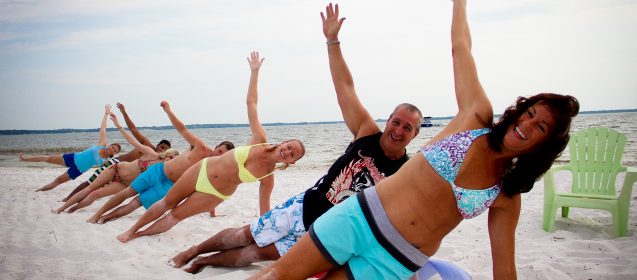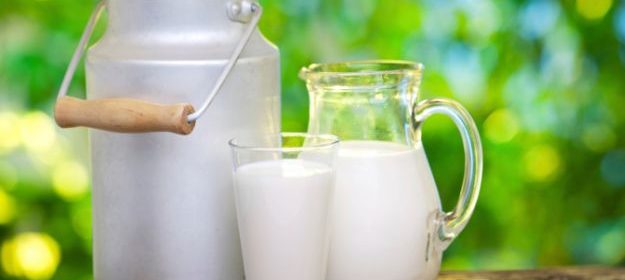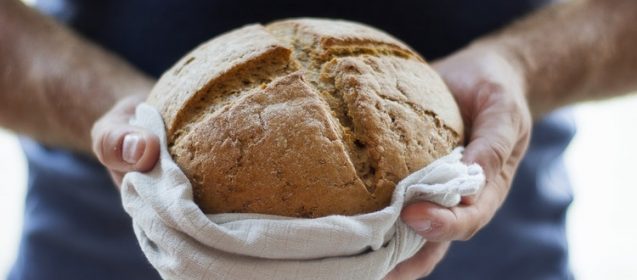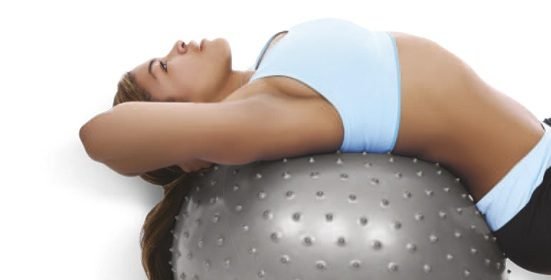Should You Exercise When Your Muscles Are Sore?
 I always get a lot of questions about whether to exercise when your muscles are sore. My first thought is that if you’re working out hard, you should expect sore muscles, but I don’t say that. I know there are a lot of different types and severity of muscle pain and some require a period of rest to allow the tissue to heal. That’s when I begin to delve further and ask clients more about the pain. There’s good pain and bad pain.
I always get a lot of questions about whether to exercise when your muscles are sore. My first thought is that if you’re working out hard, you should expect sore muscles, but I don’t say that. I know there are a lot of different types and severity of muscle pain and some require a period of rest to allow the tissue to heal. That’s when I begin to delve further and ask clients more about the pain. There’s good pain and bad pain.
Good pain stops when you quit exercising.
Good pain is the burn you feel while you’re working out. It’s also the mild discomfort you feel the next day. However, severe discomfort the next day and for up to five days is also a signal to give you muscles a rest. That doesn’t mean you should avoid exercise, just switch to a light form of exercise until the pain subsides, like walking or work other parts of the body that doesn’t have pain.
Even bad pain can be good pain.
That soreness that starts a few days after the workout means your stressing your muscles and they’re making adaptations that will get them stronger. It’s also a sign that muscle tissue needs to heal the small microscopic tears in the tissue. It’s called delayed onset muscle soreness—DOMS—which occurs most frequently when you’re just getting back to an program of regular exercise. It will go away and leave your muscles stronger than they were before you started working out.
Beware of extreme pain.
There’s a huge difference between discomfort and severe pain. You’ll know it when you feel it. Severe pain doesn’t go away and can come from injury. If it comes on suddenly, lasts more than five days or leaves you in constant pain, it’s time to see a doctor. Even if you do have an injury, you can still work around it and exercise at the gym. Just make sure you don’t work any of the muscles of the injured area.
- Working out the pain of achy muscles can be as simple as walking. It boosts circulation and can help you get back into action more quickly.
- If you’re new to working out, expect sore muscles and pain at first. It’s one of the leading causes for dropping a workout regimen, when it’s actually telling you that you’ve made progress.
- It sometimes helps to track the pain. If you rank pain from one to ten and normally have a two that boosts to a four after a workout, but suddenly the pain is at a seven or eight, you may need to do a lighter workout for a few days. Consult with your personal trainer for help.
- One study in Europe showed soaking in a hot tub could actually help DOMS. If you have access to one, perfect. If not, a long hot shower or bath may be an alternative that can help.


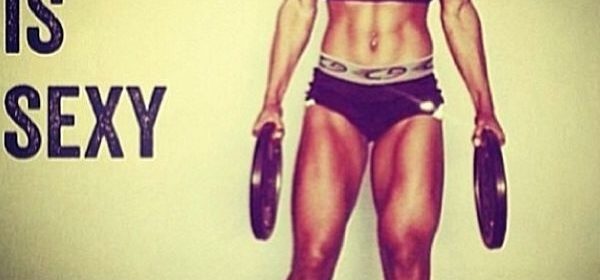
 People automatically envision strength training as just a way to build huge biceps and muscles. While you can build up some great guns from weight training—don’t worry ladies, it’s almost impossible for you to do it—the importance of strength training comes from the other benefits it brings your workout. Strength training is one way to help reduce your chances of injury. It helps strengthen the tendons, ligaments, muscles and even bones to support the body in alignment. The ligaments and tendons become more flexible, so they can do their job better. If there’s an imbalance, it helps correct it with the proper guidance.
People automatically envision strength training as just a way to build huge biceps and muscles. While you can build up some great guns from weight training—don’t worry ladies, it’s almost impossible for you to do it—the importance of strength training comes from the other benefits it brings your workout. Strength training is one way to help reduce your chances of injury. It helps strengthen the tendons, ligaments, muscles and even bones to support the body in alignment. The ligaments and tendons become more flexible, so they can do their job better. If there’s an imbalance, it helps correct it with the proper guidance.
 You don’t have to workout very long before you notice that you feel more self-assured and confident. That’s because you can boost your confidence with exercise. There’s a lot of data to back up this statement, too. For instance, one study showed that people who started an exercise program had an improved self-image, even before they saw results. Exercise also helps burn off the hormones of stress that can leave you feeling fuzzy brained and confused. When you think clearer, you have more confidence.
You don’t have to workout very long before you notice that you feel more self-assured and confident. That’s because you can boost your confidence with exercise. There’s a lot of data to back up this statement, too. For instance, one study showed that people who started an exercise program had an improved self-image, even before they saw results. Exercise also helps burn off the hormones of stress that can leave you feeling fuzzy brained and confused. When you think clearer, you have more confidence.
 When you first start pounding the pavement, you’ll find pitfalls and better ways to run. It’s easier to start out with some tips for beginner runners from someone who already experienced them or learned to avoid the pitfalls from other runners. For instance, everyone is super hyped when they first start running, but that can be a pitfall. It makes you feel invincible and you’ll probably want to run the whole way. Break your running up into sections at first, running some of the way and walking part of the way. Don’t push yourself unrealistically.
When you first start pounding the pavement, you’ll find pitfalls and better ways to run. It’s easier to start out with some tips for beginner runners from someone who already experienced them or learned to avoid the pitfalls from other runners. For instance, everyone is super hyped when they first start running, but that can be a pitfall. It makes you feel invincible and you’ll probably want to run the whole way. Break your running up into sections at first, running some of the way and walking part of the way. Don’t push yourself unrealistically.
 I hear all sorts of reasons from people on why they started their workout program. Some of those reasons include feeling better, getting healthier, adding endurance and looking fabulous. What often happens to the grand plans is they fall by the wayside when immediate results aren’t coming. There are ways to stay mentally motivated and stick with your fitness plan. You need to find ones that suit you and latch on to them.
I hear all sorts of reasons from people on why they started their workout program. Some of those reasons include feeling better, getting healthier, adding endurance and looking fabulous. What often happens to the grand plans is they fall by the wayside when immediate results aren’t coming. There are ways to stay mentally motivated and stick with your fitness plan. You need to find ones that suit you and latch on to them.